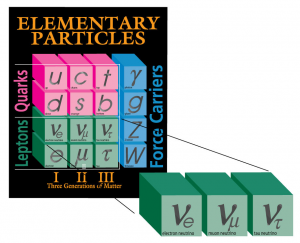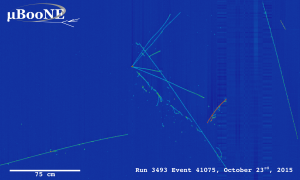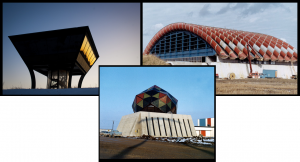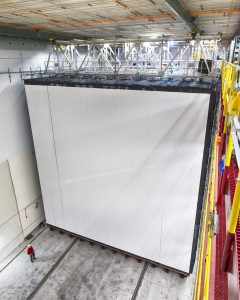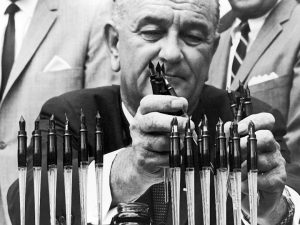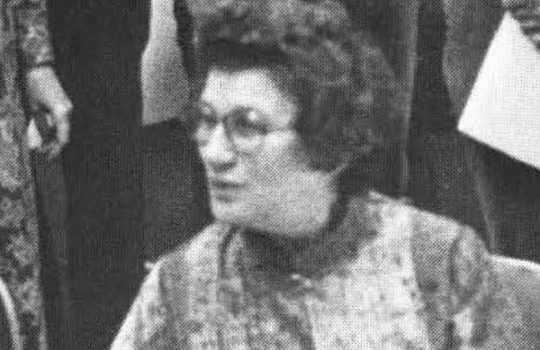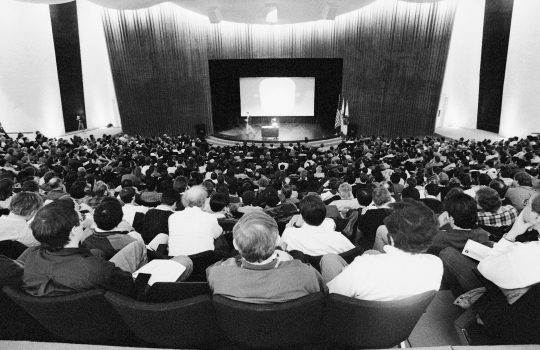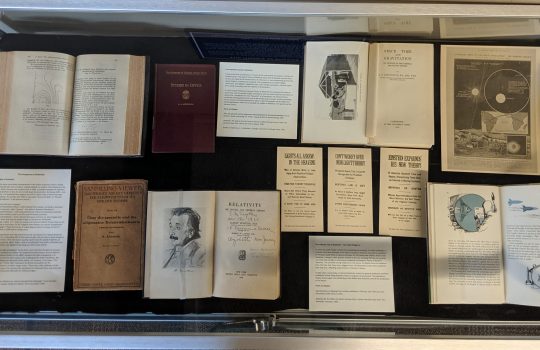Neutrinos made several November debuts at Fermilab. What else did?
Neutrinos made several November debuts at Fermilab.
November 1971: First neutrinos detected
In early 1971, NAL Director Robert R. Wilson told the lab’s Users’ Organization that “one of the first aims of experiments on the NAL accelerator system will be the detection of a neutrino. I feel that we then will be in business to do experiments on our accelerator.” Later that year, neutrinos were detected at Fermilab for the first time by E-21, an experiment named “Neutrino Physics at Very High Energies” run by a Caltech group.
In early 1971, NAL Director Robert R. Wilson told the lab’s Users’ Organization that “one of the first aims of experiments on the NAL accelerator system will be the detection of a neutrino. I feel that we then will be in business to do experiments on our accelerator.” Later that year, neutrinos were detected at Fermilab for the first time by E-21, an experiment named “Neutrino Physics at Very High Energies” run by a Caltech group.
Nov. 2, 2015: MicroBooNE detects first neutrinos
On Nov. 2, 2015, MicroBooNE announced that it had detected neutrinos generated by the Fermilab accelerators for the first time. MicroBooNE uses a 170-ton liquid-argon time projection chamber on Fermilab’s Booster neutrino beamline. The detector is part of a phased program moving towards the construction of a much larger time projection chamber detector for DUNE.
On Nov. 2, 2015, MicroBooNE announced that it had detected neutrinos generated by the Fermilab accelerators for the first time. MicroBooNE uses a 170-ton liquid-argon time projection chamber on Fermilab’s Booster neutrino beamline. The detector is part of a phased program moving towards the construction of a much larger time projection chamber detector for DUNE.
Nov. 3, 1972: Activation of experimental areas completed
When it was constructed, the lab had four experimental areas: the Internal Target Area, the Neutrino Area, the Meson Area and the Proton Area. The Internal Target Area was located in the Main Ring. The other three experimental areas each ultimately had a distinctive building: the Geodesic Dome in the Neutrino Area, the Meson Lab (designed by Wilson) in the Meson Area and the Proton Pagoda in the Proton Area. On Nov. 3, 1972, the accelerator sent a beam of protons down the Proton Area experimental line. This marked the complete activation of the experimental areas (the other three were already online).
When it was constructed, the lab had four experimental areas: the Internal Target Area, the Neutrino Area, the Meson Area and the Proton Area. The Internal Target Area was located in the Main Ring. The other three experimental areas each ultimately had a distinctive building: the Geodesic Dome in the Neutrino Area, the Meson Lab (designed by Wilson) in the Meson Area and the Proton Pagoda in the Proton Area. On Nov. 3, 1972, the accelerator sent a beam of protons down the Proton Area experimental line. This marked the complete activation of the experimental areas (the other three were already online).
Nov. 12, 2013: NOvA far detector detects first neutrinos
The NOvA far detector is constructed from PVC and filled with a scintillating liquid that gives off light when a neutrino interacts with it. It detected its first neutrino sent from Fermilab on Nov. 12, 2013.
The NOvA far detector is constructed from PVC and filled with a scintillating liquid that gives off light when a neutrino interacts with it. It detected its first neutrino sent from Fermilab on Nov. 12, 2013.

